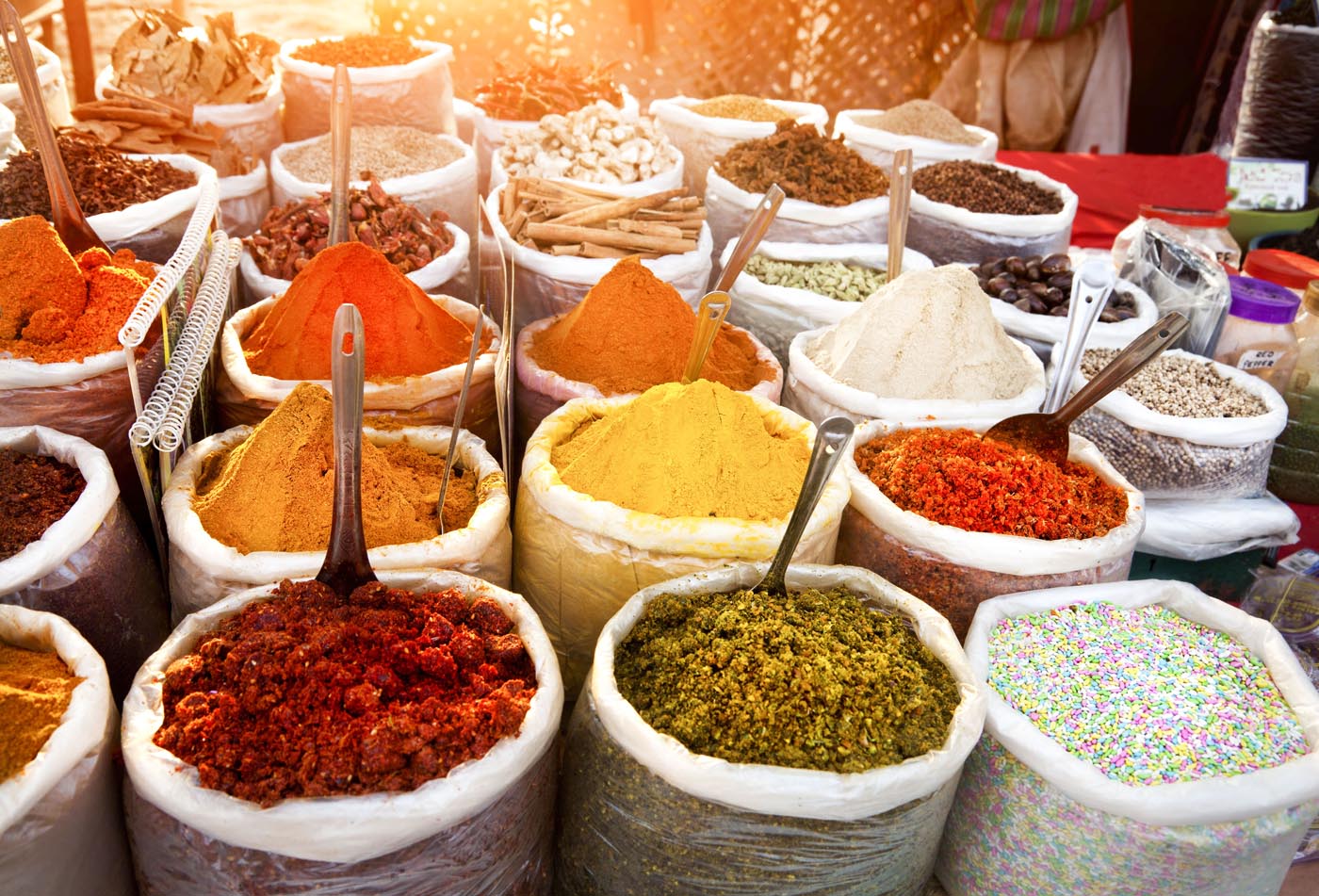A Synopsis of the Ayurvedic Fundamentals of Food and its Preparation
ALL TEXT EXCERPTED FROM THE BOOK SECRETS OF INDIAN GASTRONOMY, BY RENOWNED CULINARY GURU, MANJIT GILL, CORPORATE CHEF, ITC-HOTELS
“Our food is deeply grounded with five elements, five senses, three strands, three humors, six savors and nine feelings.”
The physical, as well as metaphysical, aspects of food cannot be ignored. Man is born of food, nourished by food and becomes food for other creations. Matter draws energy from food to become alive, gets nourished and then grows. Rasa, the juice of food, converts into rakta, the juice of life, to cajole the seed of tomorrow, to propagate life.
Our Upanishads have envisioned a cycle of life in the macrosystem of the universe. Earth gives life to Vanaspati and other life forms. Water creates shores on the Earth. Fire evaporates moisture to bring clouds of rain. The winds crackle with lighting and fire. Space offers its expanse to sway the air. And the earth vibrates to give space to its three basic forms, or gunas: sattva, rajas and tamas. It is these three basic gunas that have permeated all matter to form their basic nature. Human personality, too, is a blend of these three gunas; and the dominance of any of the three determines behavior patterns.
A right balance of the three gunas is the key ingredient of a wholesome and healthy diet, the emphasis being on raw and freshly cooked food. No wonder a great deal of thought is invested in our scriptures, particularly the Upanishads, on how food and life are interlinked with each other and with God. In the contemporary context, whether at home or at a commercial establishment, four essentials of culinary science can be culled from the scriptures: knowledge of food, preparation skills, the creator’s state of mind, and hygiene. Food has the unique quality of absorbing from its surroundings. It is therefore necessary that the creator must be endowed with hygiene, health and freshness. Indian gastronomy is an ancient treasure trove of knowledge, and our cuisine has continuously evolved, based on the philosophy of wellness and longevity. My advice remains to understand and practice these learnings which, when integrated into our daily way of living and eating, reward us with brilliance of body, mind and soul.
THE PILLAR OF LIFE
THOUGH AYURVEDA IS POPULARLY REGARDED AS A stream of traditional medicine, it is much more than that. It is the science of life. The word itself signifies that: ayur means life and veda connotes knowledge. And the goal of ayurveda is the pursuit of longevity and complete fulfillment.


Ayurveda is one of the branches of the Vedas. It is regarded as an Upaveda of the Rig Veda and Atharva Veda; but, essentially speaking, it is a stream of the knowledge coming down generations since eternity, parallel to the Vedic literature. That is why its emergence has been said to be from the creator, Brahma himself, prior to “creation.”
Our scriptures mention the passage of this vital knowledge from conception to propagation. Brahma, the creator of the universe, imparted this knowledge to Prajapati, the lord of the human species. Prajapati instructed the Ashwins, or twin Deities, to bring ayurveda to Lord Indra, king of the Gods and the upholder of the heavenly order. Indra awarded this knowledge to the greater rishis and teachers—Atreya, Bharadwaja, Kashyapa and Dhanvantari.
Then Agnivesha, Rishi Atreya’s meticulous pupil, documented the science of ayurveda. And finally Charaka discovered the lost ends in the 5th century and recompiled the science in the form of Charaka Samhita. This book, which is full of Charaka’s medical conjectures, defines food, sleep and self control as the pillars that support life.
In a simple, rhythmic style, the book talks about complex phenomena, like ingestion, digestion, absorption, assimilation and metabolism of the five basic elements, namely earth (prithivi), water (aap), fire (agni), air (vayu) and ether (akasha). Both Charaka Samhita and Agnivesha clearly state that curable and incurable body disorders are the result of dietary indiscretions.
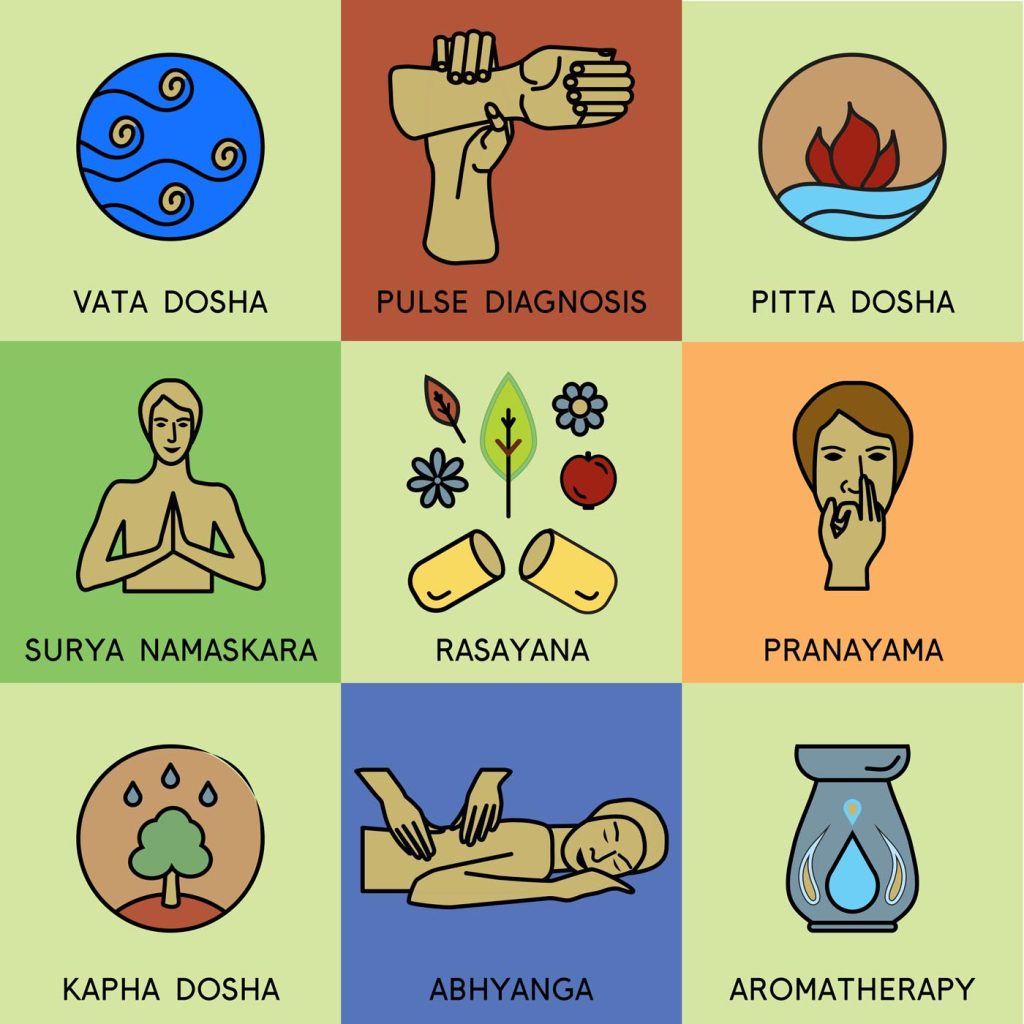

Further, food is classified into four categories according to the way it is consumed: solid food, which is eaten; liquids to be drunk; semi-fluids that are licked; and fibrous foods that are chewed.
The omnipresence of the five basic elements in complex proportions in food actually determines its taste and behavior.
Interestingly, unlike what is popularly believed, ayurveda lays a lot of stress on the taste of food. Taste, which one can experience, is the common man’s key to uncovering the highly complex science of nutrition.
The experience of the palate triggers a chain of chemical reactions that have an effect on all organs of the body, particularly the digestive system. Food items of the tejas prakriti (hot nature) enhance the digestive functions, while the ingestion of food items on the shita prakriti (cool nature) slows down enzyme inundation. Tastes also have a subtle effect on the body and its metabolism.
Ayurveda categorizes tastes into six behavioral categories. The basic elements of sweet food are mainly earth and water. They tend to be heavy and moist, so they provide heaviness and moisture to the body. Sour tasting food has earth and fire as the basic elements. It stimulates the digestive system and provides warmth to the body. Salty food, primarily consisting of fire and water, promotes digestive vigor and stimulates retention of water in the body. Excess salt, however, may cause symptoms of dehydration.
Pungent food is made up of air and fire. These elements are found in great proportions in mustard, chilli, pepper, onions, garlic and other hot spices. Bitter food has ether and air as basic elements; it provides coolness and buoyancy. Such foods balance the moist, heavy and hot qualities of sweet, salty and sour food items. This taste is found more in green leafy vegetables. Finally, astringent food comprises air and earth. It has a cooling and drying effect on the body. Astringency incidentally, is found in unripe bananas, pomegranate and berries of different kinds. Each taste has a subtle emotional and mental effect.
A well-balanced diet, according to the principles, should contain good rice procured from the paddy field, green gram, green vegetables, rock salt, barley, milk and ghee, honey and hygienically collected rainwater. These prescribed food items provide the body with necessary carbohydrates, proteins, fats, minerals and vitamins. Ayurveda also stipulates that no one shall eat without washing one’s hands, feet and face and cleaning one’s mouth.
It recommends proper chewing of food before swallowing. It does not condemn any kind of food, irrespective of the cooking style and taste. All cuisines subscribe to the ayurvedic values so far as they are balanced.In this regard, ayurveda includes what is probably the oldest and most visionary gastronomic science in the world. Such a fully developed science now requires the right translation with deep understanding and adaptation. Some of the greatest doctors and sages have contributed their finest insights and discoveries to its ancient and profound food wisdom.
Ten Food Rules for Health
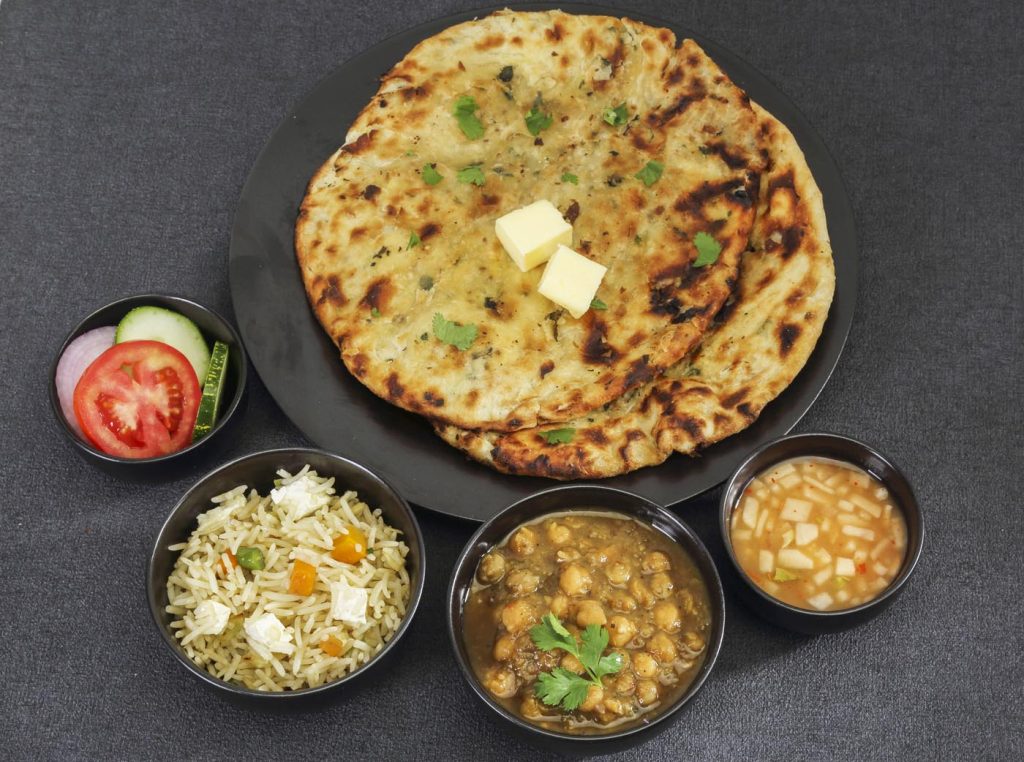

ACCORDING TO RISHI CHARAKA, AYURVEDA CLEARLY STATES that curable and noncurable body disorders are the results of dietary disorders.
Here are ten ayurvedic guidelines on diet.
1. Eat foods that are freshly cooked.
2. Food should be tasty and easy to digest.
3. Food needs to be eaten in proper quantities, neither too much nor too little.
4. Food and its courses need to work together, not contradict one another.
5. Food should be eaten on an empty stomach, after the previous meal has been digested.
6. Food should be eaten in a congenial atmosphere and with appropriate equipment and implements.
7. Food should not be eaten hurriedly.
8. Food should not be eaten slowly, lest its flavor be lost.
9. Food should be eaten with concentrated attention.
10. Foods should be eaten that suit one’s constitution and temperament.
Three Bodily Humors
By Pandit Vamadeva Shastri (David Frawley)
DOSHAS RELATE TO PHYSICAL AND PSYCHOLOGICAL ENERGIES, MIND-BODY types, temperaments and characteristics. Dosha means “that which causes things to decay,” referring to the disease potential inherent in these biological humors. Doshas are three: vata, pitta and kapha.
Pitta, which relates to bile at a physiological level, or the “fire” humor, helps us in digestion on all levels, physical and mental—from proper digestion of food to the ability to perceive reality. It reflects the qualities of fire and the oily aspect of water. It is linked to warmth, courage, valor and assertion.
Vata, meaning air or wind, as a biological force, or the “air” humor, propels all bodily functions and movements, from the digestive system to the mind, connected to the background power of prana. It reflects the qualities of air and space. It manifests as energy, enthusiasm, desire for change and instability.
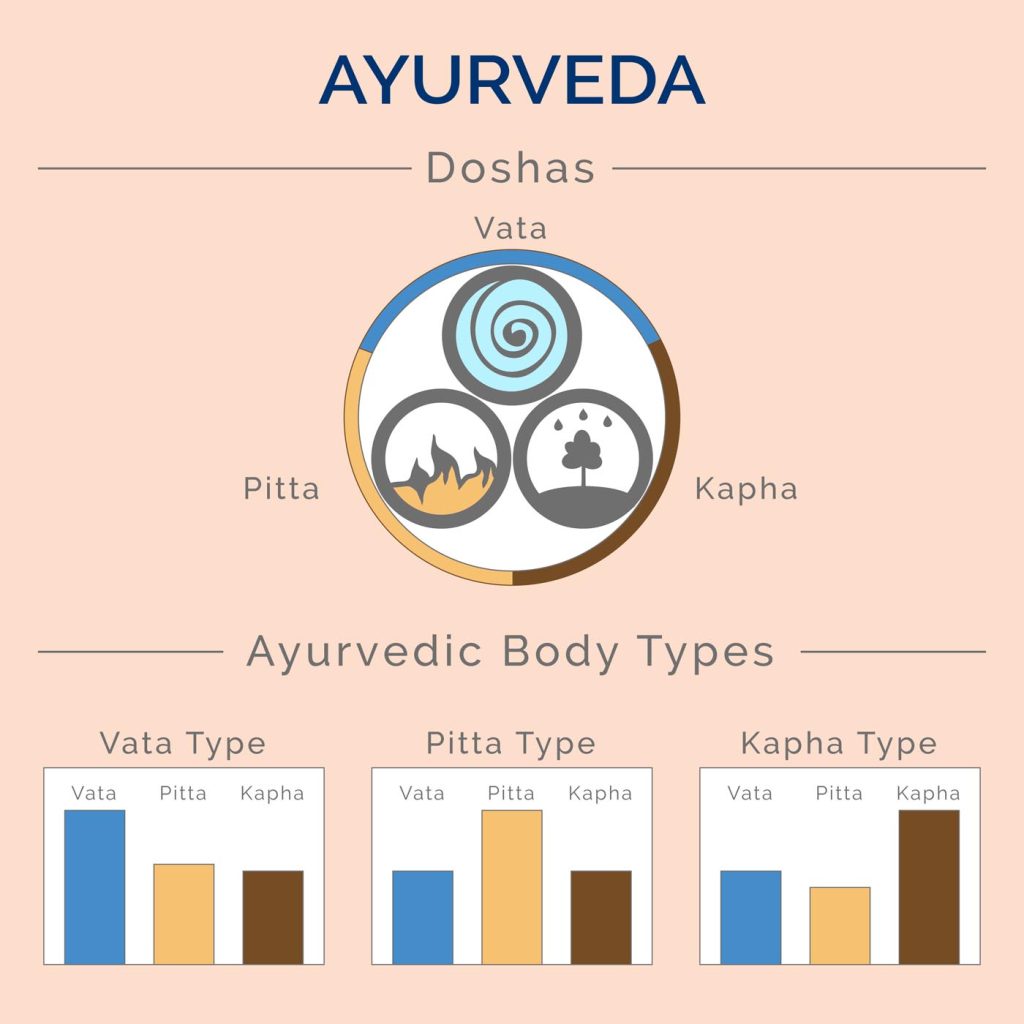

Kapha, relating to mucus at a physiological level, or the “water” humor, is responsible for cohesion, form and nutrition in body and mind. It reflects the qualities of water and earth, the dominant qualities found in most foods. It is linked with feeling, endurance, receptivity and inertia.
THREE STRANDS OF NATURE
Even the food each person prefers is of three kinds, according to the three modes of material nature. The same is true of sacrifices, austerities and charity. Here are the distinctions between them.
You eat what you are and you are what you eat.
Bhagavad Gita 27. 7–10
ALL IMAGES: SHUTTERSTOCK


This verse points to the interrelationship between food, self, climate and the ultimate reality by true cultural formulation. First you eat what you are; and second you are what you eat. The first is well grounded in the Bhagavad Gita, where foods are classified according to the strands (gunas). The second formulation bases itself on the Upanishadic instruction: pure nourishment leads to pure mind. A healthy body is considered to be a by-product of discriminating and controlled nourishments.
The Earth vibrates to provide ether (space) to its three strands, or gunas. They are defined as the quality of energy. As per Indian gastronomy, the balance of the trigunas—sattva, rajas and tamas—is the key ingredient of a wholesome diet for health. Moderation is the key.
SATTVIC: Sattva means pure. Sattva is a benevolent, unobstructive guna. It is associated with happiness and knowledge and forms the soul of man. A person, who has a command over his own thinking abilities, is sattvik in nature. In food, the sattvik tattva enhances longevity, mental power, health and the feeling of contentment. Consuming food in this category gives alertness, quick-thinking and is in harmony with nature. It is savory and nutritive. Therefore, a person who has dominant sattvic traits will be a thinker on a higher plane, will have more curiosity, strive hard for real knowledge, will be patient in nature and will try to win a competitive situation by adoption of fair means. The person is conducive to serenity and spirituality. He has strong reflexes, quick to grasp even at the slightest stimuli. Sattvik food is easily digestible, fresh and ripe and can be cooked by a simple and quick process. A sattvic person will eat in moderate quantities till he satiates his hunger half way. Examples of such foods are milk and its products, jaggery, honey, fruits, etc.
RAJASIC: Rajas, as the name suggests, is an expression of royalty. Its features are passion, valor, pride and possession. It is known to be the manas (mind) of the human cycle. A rajasic person is involved in physically oriented work. A person who is rajasic is basically a doer, is desirous and domineering and will use almost any means to succeed. The rajasic tattva in food triggers activity and the wish to conquer. As the food is spicy, rich in fats and salts, pungent and warm, it also gives rise to many ailments. Highly spiced food, food produced by suppressive means, or the meat of slaughtered animals and fish (for non-vegetarians) is rajas dominant. The person who consumes such food loses capacity to distinguish the minimum stimuli and as time goes on requires stronger ones to reach a good level of deep understanding. A rajasik needs high-energy food, hence would consume till his hunger is three quarters fulfilled. These are foods that are bitter, sour, salty and pungent.
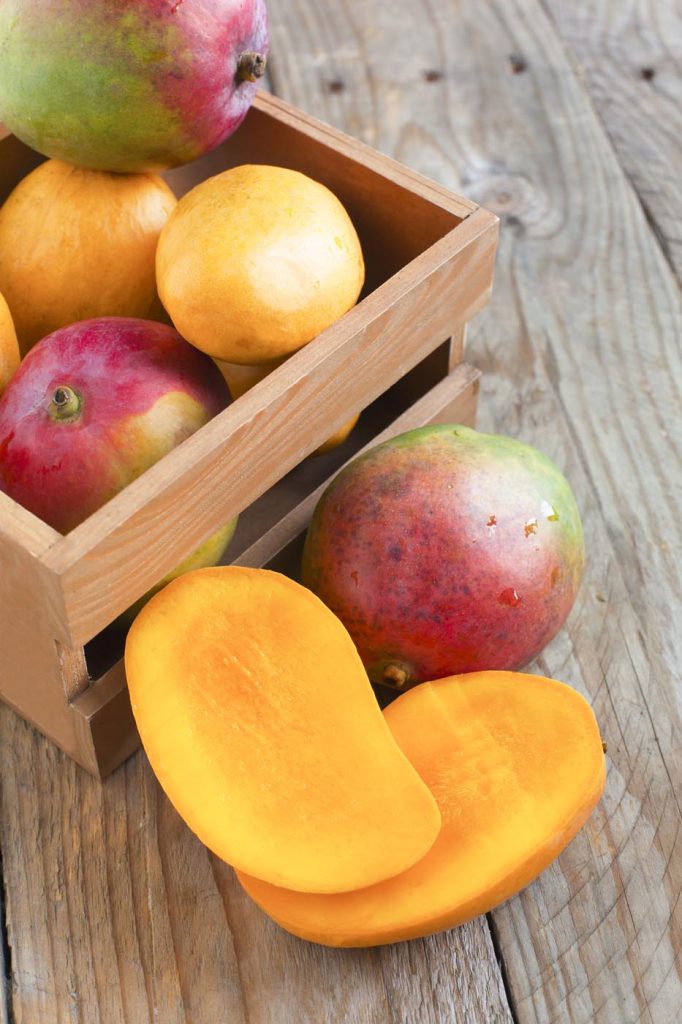

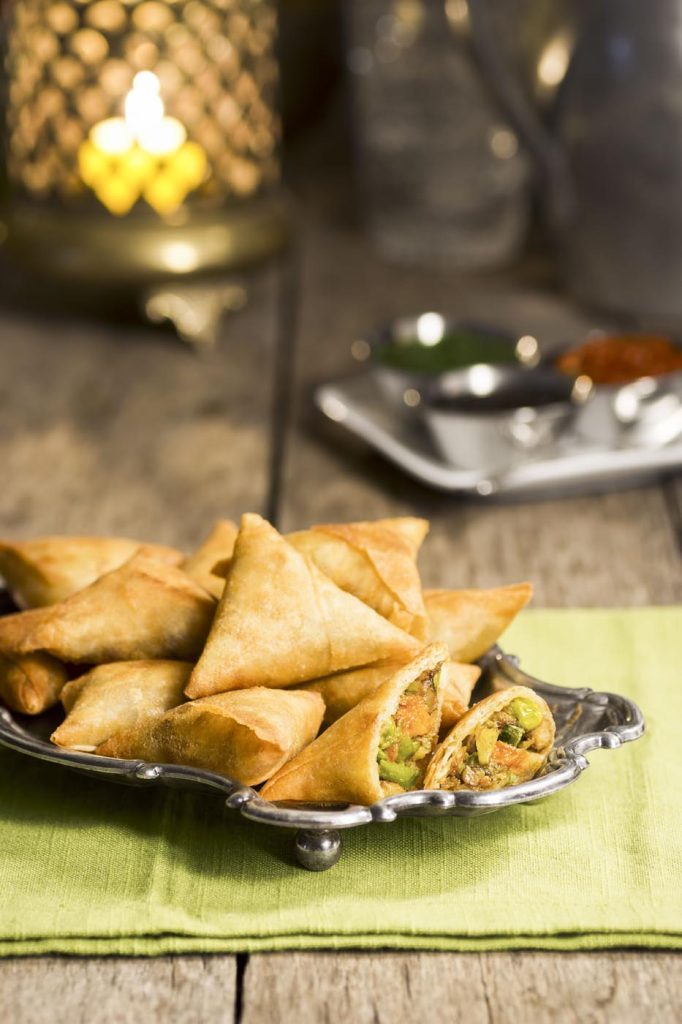

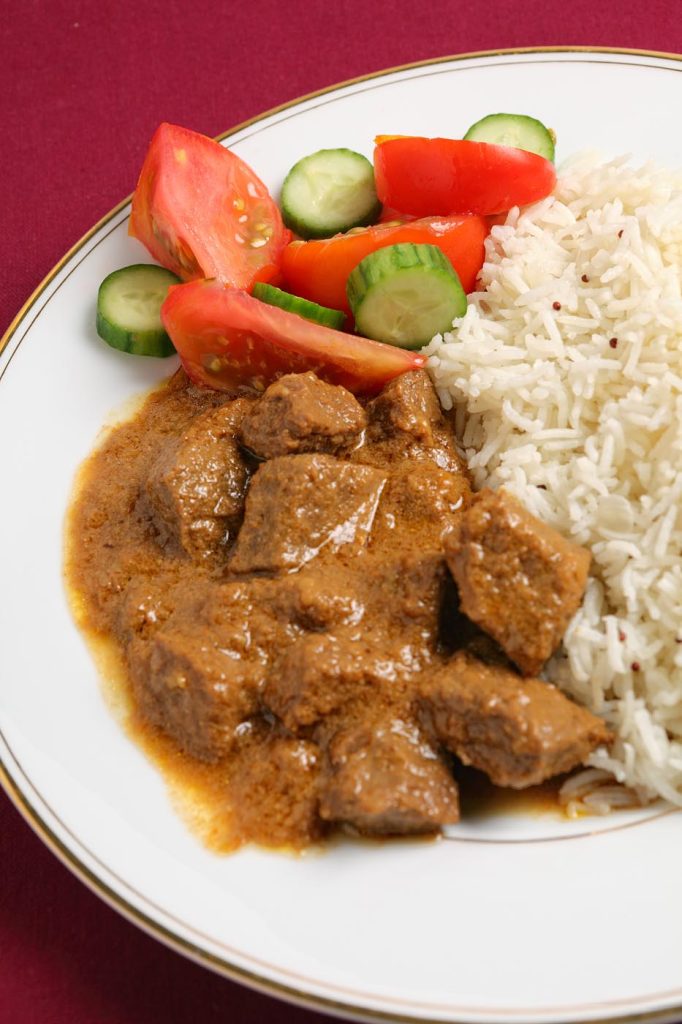

TAMASIC: Tamas inspires indolence, violence and a state of rest. It relates to decomposition and death. A person who is tamasic in nature will lack the desire to learn or put any effort in any activity. He lacks the intellectual capacity to act on the situation using common comprehension. Tamasics prefer eating food as the only priority and hence fill their appetite completely with food. All heavy, fried and stale food would be included in this category, because it is basically prepared long before being eaten. The food is tasteless, putrid, foul and impure in characteristics. On the other hand, it might be too bitter, too salty, too sour, too pungent or too hot. While consumption of this kind of food can be hazardous to health, a small portion induces rest and sleep. A tamasic palate will fill the stomach with solids alone, leaving no place for liquids or air. Beef is tamasic as are preserved meats.
The Five Elements
WHEN WE LOOK AT NATURE, WE SEE THAT THE FIVE Elements create the base for the entire physical world. These five elements are space, air, fire, water and earth. Ayurveda, in Indian gastronomy, talks about the five elements within the human body. We nourish our body with foods from earth. Water is nectar for us; it makes up more than 70 percent of our total body mass. Fire provides heat, radiant energy and exists within metabolic action. Air flows freely in the body and provides oxygen to every cell. Space, in the background, allows the four elements to interact in a particular fashion.
In ayurveda, to explore the elements in the human body, we use the senses of hearing, taste, touch, sight and smell.
The human life cycle is governed by the three doshas: 1) childhood, where physical growth takes place (water and earth); 2) adulthood, where activity and change occur (fire and water); and 3) old age, where the body begins to weaken (space and air).


The elements, mahabhutas, have certain qualities, attributes and impacts on the body, mind and soul. All objects and substances are a mixture of the five elements, but each has one dominating element by which it is identified and classified. Food is used to illustrate the element group. Characteristics of the five elements are as follows:
Space, Akasha: It is soft, light and subtle. Anything that is profuse and ethereal; foods which are hollow and light, such as popcorn, puffed rice, puffed lotus seeds. Foods which are prepared with air incorporation or created with raising agents fall into this category. Consuming ether elemental food increases lightness and softness in the body.
Air, Vayu: It is weightless, mobile, cold, dry, porous and subtle. Substances that create dryness and are airy or create gas fall into this category, foods like cabbage, cauliflower, beans and radish. Their intake increases coolness, dryness, movement and circulation. Excessive consumption of substances that are vayu in nature can cause dryness and gas.
Fire, Agni or Tejas: It is hot, sharp, dry, subtle and rough. It has the quality of radiation of heat and light. Anything combustible and pungent is of the nature of agni, foods like clove, cumin, ajwain, cinnamon and chillies. Intake of such items increases digestion, metabolism, glow and color of the skin.
Water, Jal or Aap: It is oily, moist, cool, soft and sticky. Its attributes are cohesion and lubrication. It facilitates fluidity and helps in identifying tastes through saliva. Foods like gourd in its different varieties, cucumber, melon, watermelon and zucchini are a few examples. They increase smoothness, coolness, softness and fluids.
Earth, Prithivi: It is heavy, rough, solid, stable and slow. It facilitates fragrance, flavors, odors and shapes. Foods which are solid and heavy, like cheese, banana, mango and chikoo, fall in this category. Its intake increases stability, obesity and solidity in the body.
One can consider and classify all substances with the basic understanding that everything is a mixture of different proportions of the five elements.
Composition of Our Body
We are one of the living organisms present on Earth. We are physically made up of exactly the same elements that form all other similar creatures. When we die, our body returns to earth, water, fire, air and ether. The combination of these elements sustains our body through breathing air, consuming food and taking in the elements found in the surrounding natural world.
In our body, akasha, or ether, is present wherever there is a cavity, like the nostrils, mouth, ears, throat, lungs and stomach; vayu, or air, in movements of the lungs, heart, stomach, intestine and joints. Agni, or fire, can be seen as intelligence, body temperature and metabolic activities, such as digestion. Jal, or water, is present as plasma, blood, mucus and saliva. Prithivi, earth, is any solid structure, like fat, muscles, skin, nails, hair, bones and teeth. The basic element is earth, and its compatibility with man clarifies why substances found in the natural world, like vegetables, fruits, herbs and spices, are harmonious with human systems. They can be easily absorbed and cause no adverse reaction or side effects. Consumption in appropriate quantity is the key. They are fundamentally the same in character and composition. This is why foods are able to heal our body.
THE SIX TASTES
AS PER INDIAN GASTRONOMY, NUTRITION IS ON THE TIP OF the tongue. The sense of taste is a natural guide to proper nutrition. For centuries we have depended largely upon taste to identify healthy food from nature. It’s the work of the taste buds to identify tastes and, even more, to reveal the nutritive value of food and stimulate the agni digestive power.
Bland food may not be nourishing despite its vitamins or minerals, because without stimulating agni there is no real power of digestion. Ayurvedic gastronomy has therefore always included the science of cooking with the right spices. Tastes were discovered from ancient times in Indian gastronomy in ayurveda. When the receptors combine themselves with food molecules—for example sugar—an electrical impulse is transmitted to the brain for the final taste analysis.
According to science, the theory is similar. During the biological evolution of man, the development of different types of taste receptors was quite remarkable, especially that of bitter and astringent, whereas sweet was the only naturally acceptable taste. When a child is born, the first solid food given is always sweet in taste. Children initially are highly sensitive to bitterness, but that slowly decreases with age. This is particularly evident in women, who as adults or seniors consume more bitter foods than they would have consumed in their childhood.
When we eat, the aromas of food are released through chewing and digestion. The mouth and nose communicate while taste and smell work together to interpret characteristics of what we eat and drink.
Food speaks to us directly through taste. A juicy mango may call out to us with a gentle message of delight, while the flaming pepper cries out in warning. As we tune into the tastes naturally desired by the body, we tap into the body’s innate wisdom regarding food and nutrition. According to ayurveda, the sense of taste is a natural guide map towards proper nutrition.
If we feel an unusual desire for a particular taste, then it is the corresponding emotional effect that we are after. In most cases, it is fine to give in to it, as long as these desires do not become addictions. The bitter taste is calming and detaching, the pungent taste motivating and alerting, the salty taste sedating and grounding, while the sweet taste is soothing.
For ages, humans relied largely upon taste to discover healthy foods in nature and avoid toxicity. It was the search of the tasty food which helped man go through an evolution of Indian cuisine. It was also taste which determined if the food was safe or fit for consumption.
Rasa means appreciation, artistic delight and musical note. Rasa also means “sap,” as the taste of an herb reflects the properties of the sap that invigorates it. Rasa means circulation, to feel, to dance, all of which is reflected in the energizing power of taste. According to ayurveda, there are six tastes. Every taste we feel on our tongue is in one way or another a combination of any of two of the five elements, with the help of which all foods can be categorized as sweet, sour, salty, bitter, pungent or astringent.
ALL IMAGES: SHUTTERSTOCK
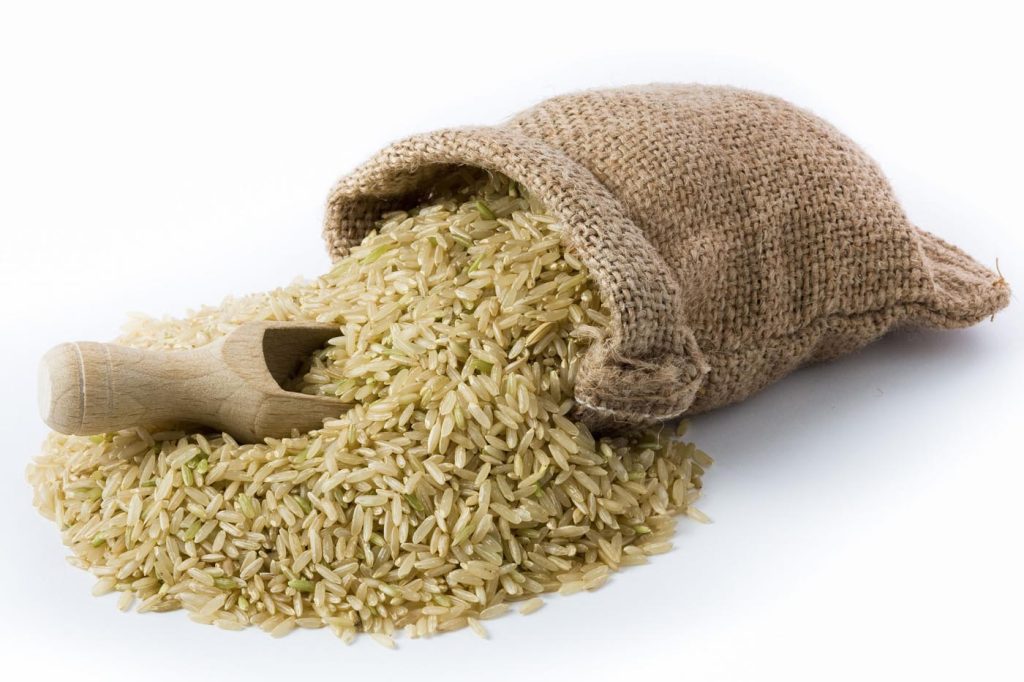

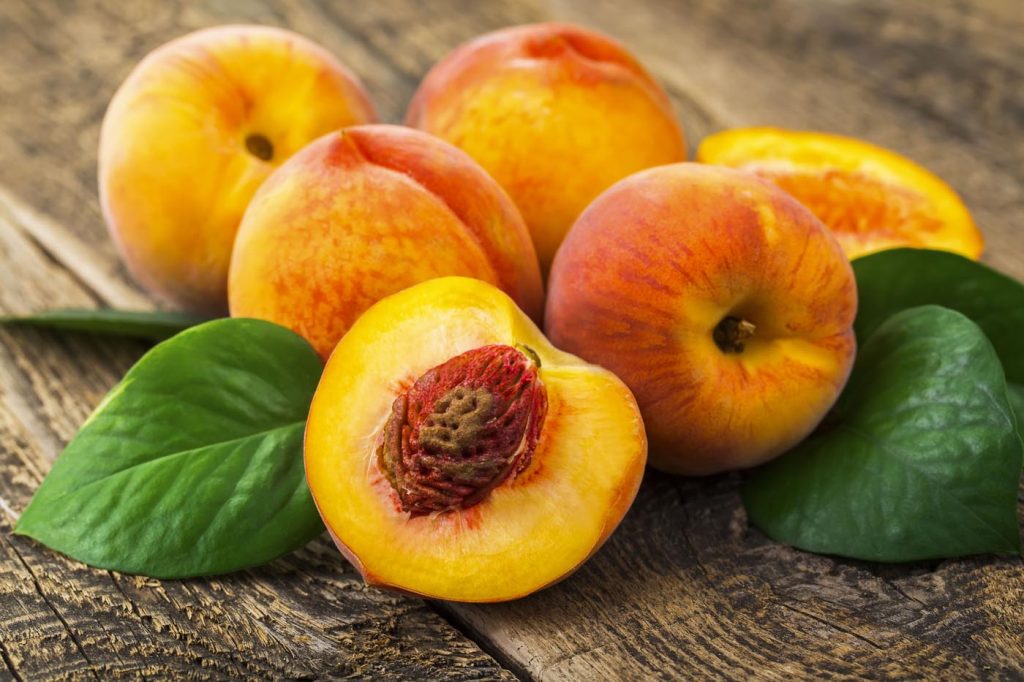

Six tastes define foods in Indian gastronomy. Sweet: rice, peaches, walnuts and onions.


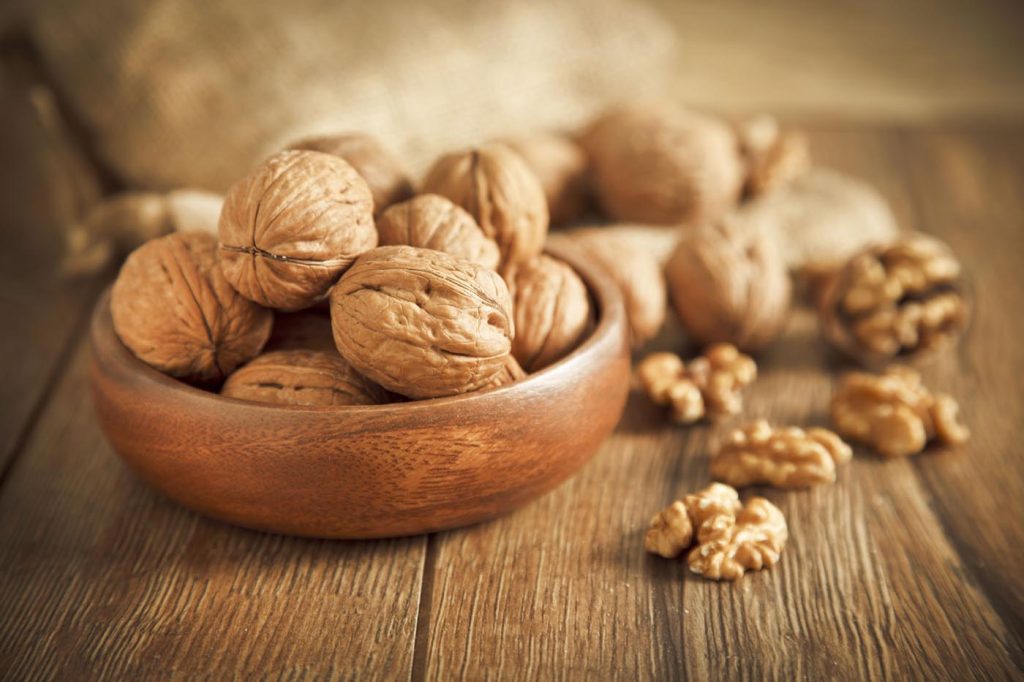

SWEET: Madhura, or sweet taste, is considered to be the first bite of the meal, which cools down the system and thus increases the fire for digestion. The sweet taste is the result of the combination of water and earth. It is moist and cooling by nature. It is heavy, cold and unctuous. It is nourishing, soothing and satisfying. It provides calories, removes nervousness created by glucose deficiency, removes acidity and provides a healthy glow to the skin. Nutrient fluids of the body—i.e., blood, flesh, fat, bone, bone marrow and vital essence (also known as ojas)—are also improved by consuming sweet taste. Sweet taste builds tissues and calms nerves. It is excellent for the seven vital tissues. It increases bulk and adds weight. However, excess of sweet-tasting food is not good for the teeth. It increases the mucus, and, in excess, results in numbness, lethargy, heaviness, loss of appetite, indigestion, weak gastric fire, cough, constipation and vomiting.
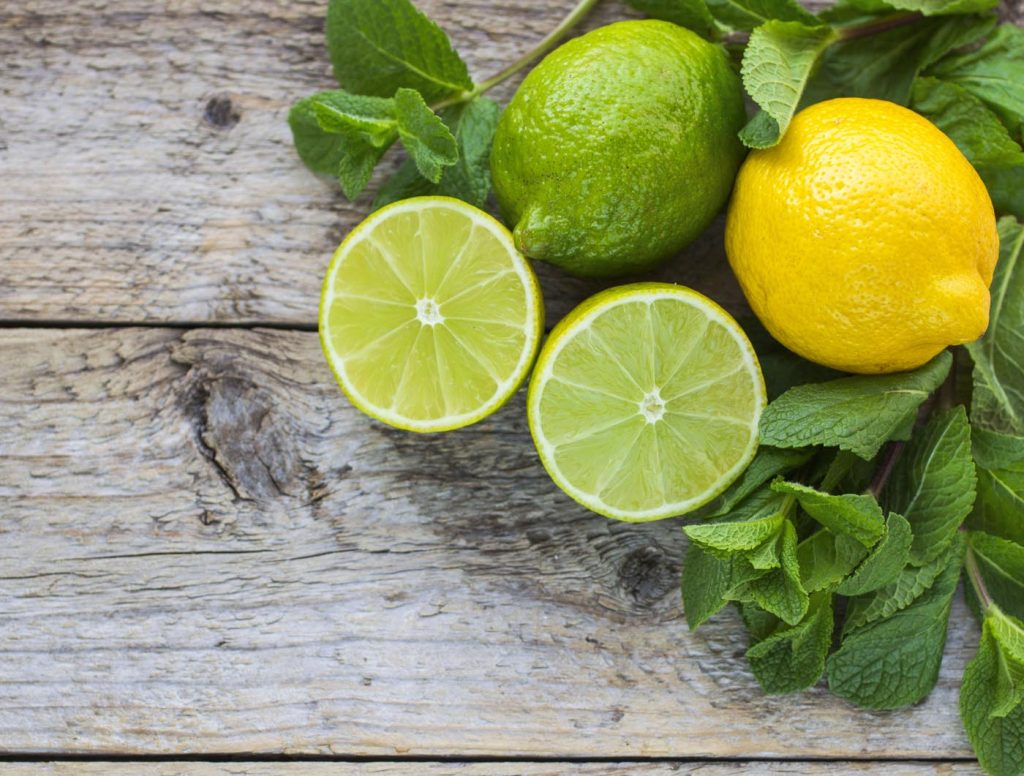

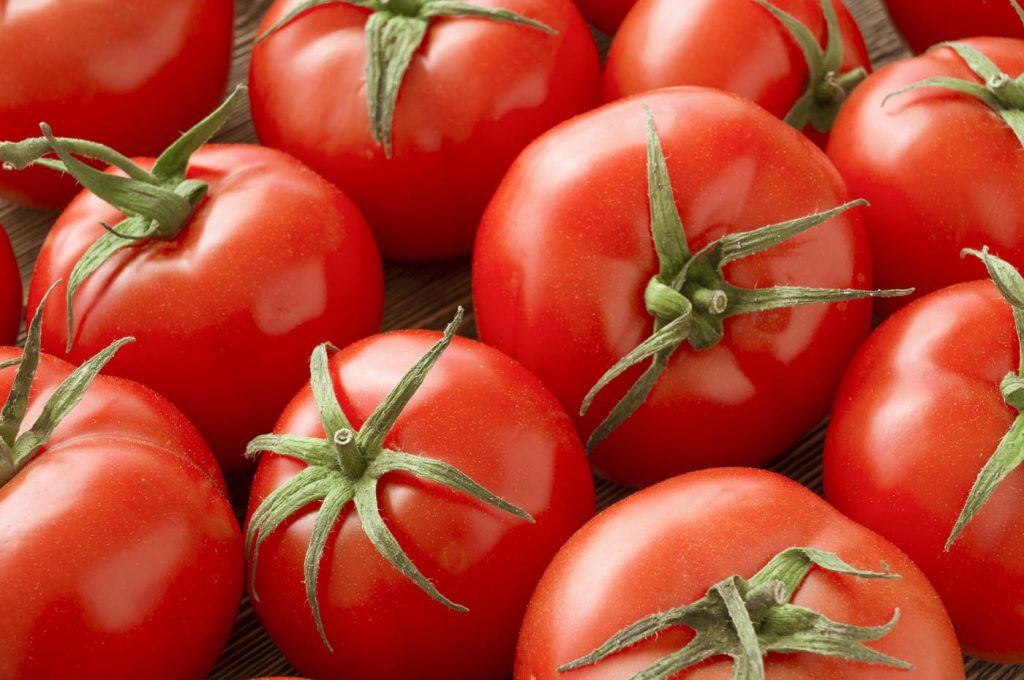

Sour: citrus, tomatos, pineapple and garlic.
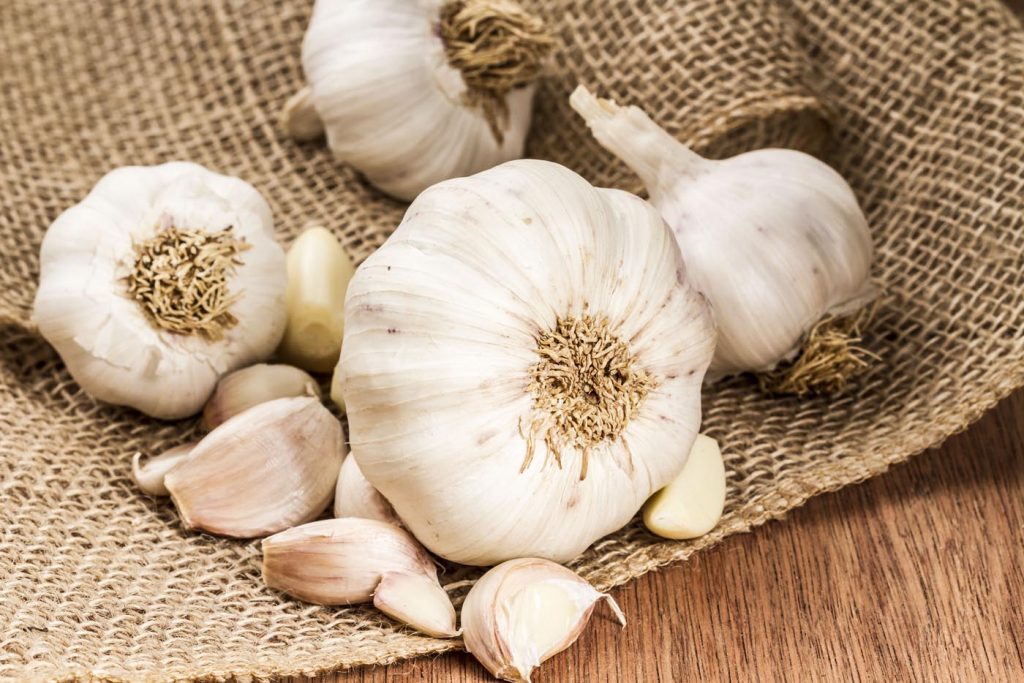

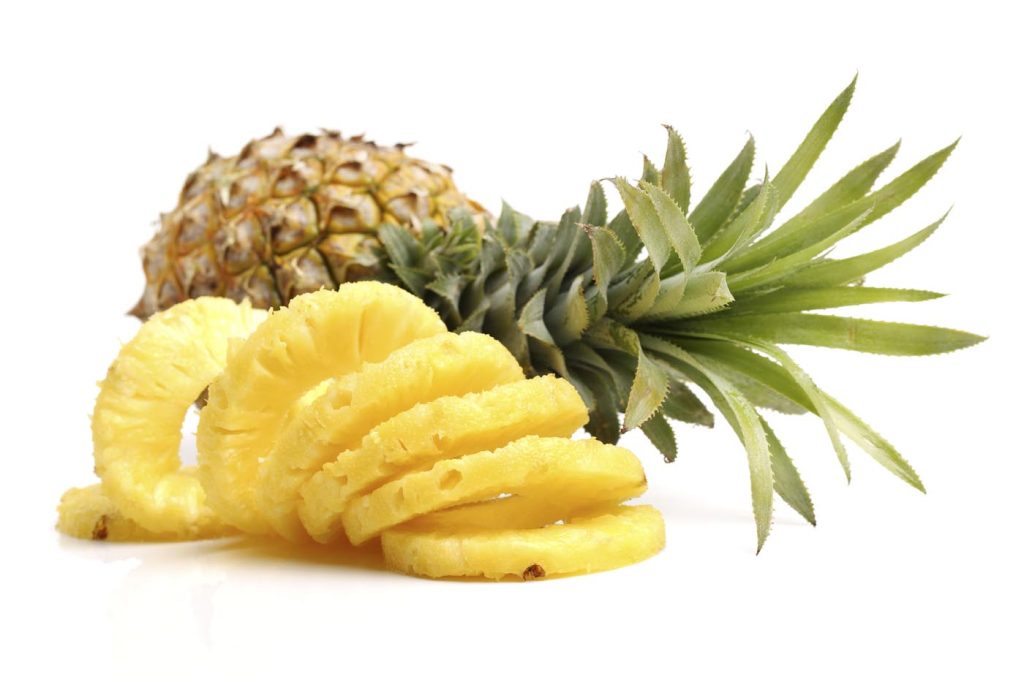

SOUR: Amla, the sour taste, results from the mixture of the earth and fire elements. It has a hot effect and is light and moist by nature. It should be consumed at the second stage of the meal. It excites the mind, increases appetite and produces saliva. (That happens even when a sour food is just remembered; think about a lemon!) The sour taste stimulates the digestive fire, builds up and invigorates the body, stabilizes functions of the senses, lightens the mind, increases strength and regulates the movement of gases. It nourishes all vital tissues except the reproductive, or shukra. It also cleanses tissues and increases absorption of minerals. It strengthens the heart, helps the food move down the digestive tract, moistens the food, gives pleasure and increases the appetite. If consumed in excess, it provokes thirst. It increases pitta and kapha and subdues vata. In excess it can also cause acidity and a general sensation of burning in the throat, chest and heart. A few examples of sour foods are lemon and other citrus fruits, yoghurt, grapes, unripe mango, pineapple, pomegranate, raisins, tomatoes, garlic, tamarind and gooseberry.
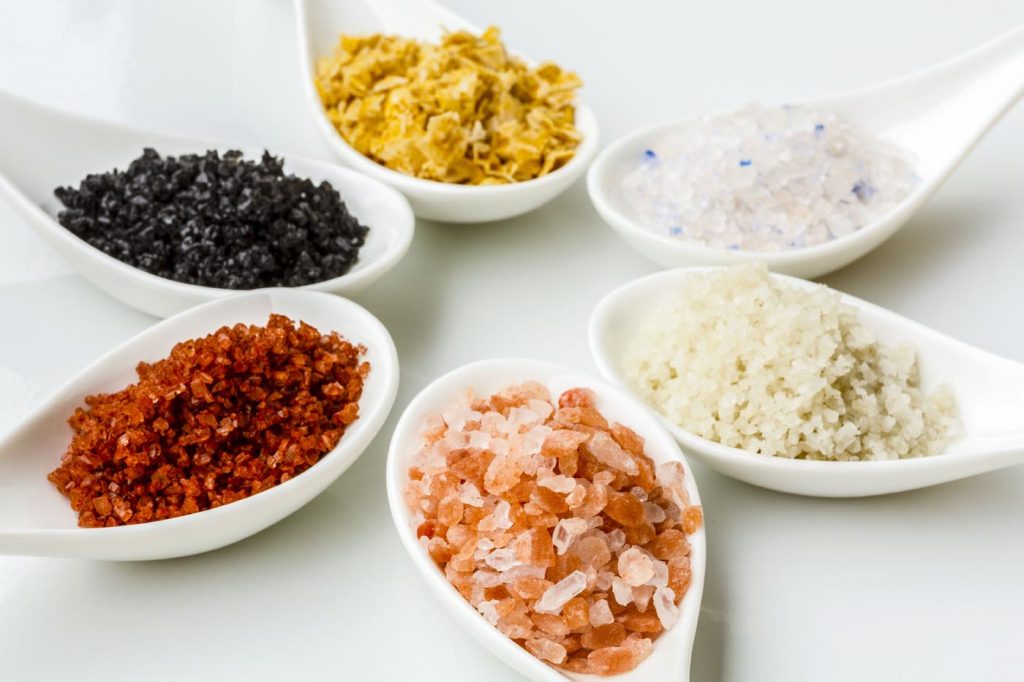

SALTY: Lavana, the salty taste, is heavy, hot and moist in nature. It is produced from the merging of the water and fire elements. It excites hunger, and should be consumed after the sour taste. Salt is a digestive; it diffuses food particles, liquefies food and subdues vata. It cures stiffness and obstruction of body fluids and prevents the accumulation of toxins. It increases the secretion of saliva; this decreases kapha, clarifies the digestive passage and softens all the limbs. It can easily dominate all other tastes if added in excess, which can lead to water retention and thus weight gain. If used excessively, it provokes dryness and thirst. It also causes fatigue and increases body heat, which can result in fainting. It increases swelling, loosens teeth and gums, creates impurities of the blood and decreases virility. Excess consumption can aggravate pitta and kapha, which can cause premature wrinkles, lead to gray hair and be harmful for eyes and skin. Some examples of natural occurring salts are rock salt, sea salt, lake salt, black salt, potatoes, spinach and garlic.
ALL IMAGES: SHUTTERSTOCK
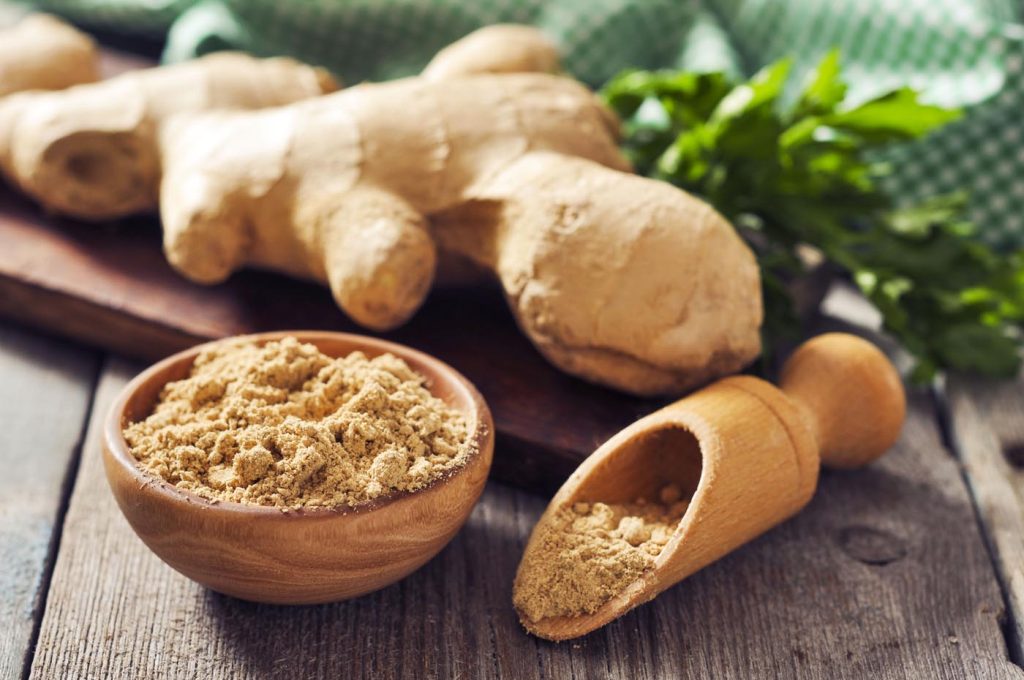



Pungent: ginger, black pepper, cloves and asafetida.
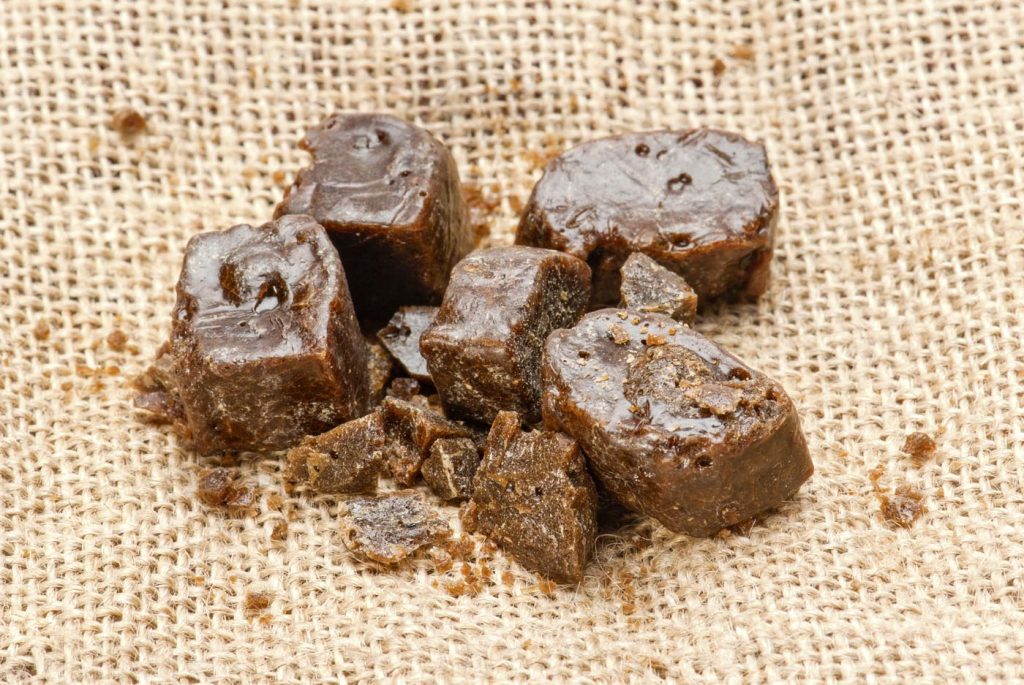

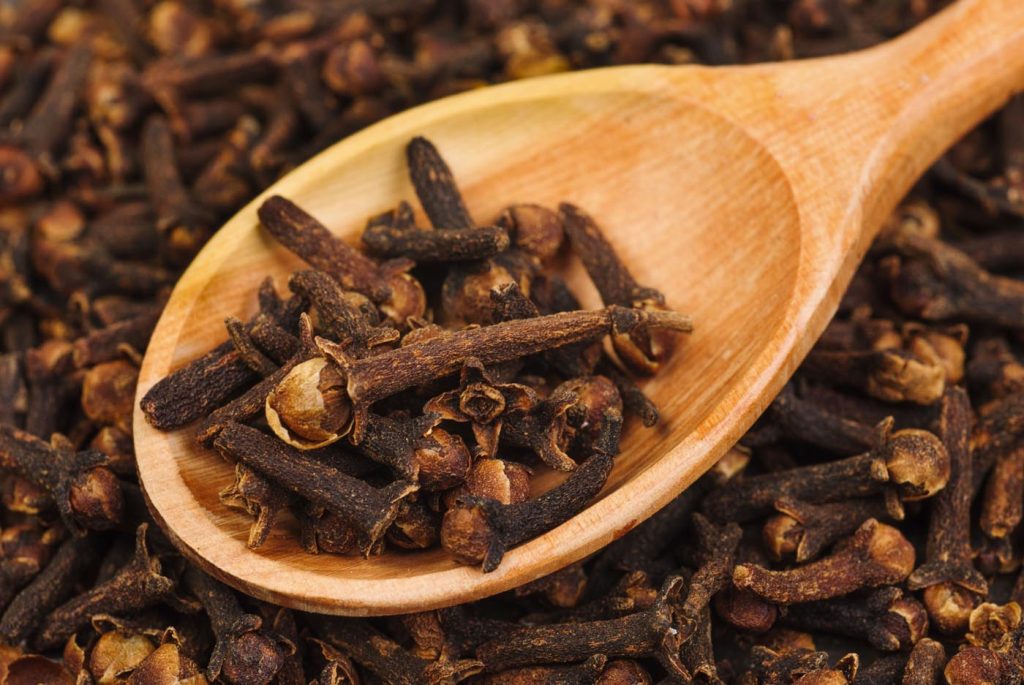

PUNGENT: Tikta, the pungent taste, is light, hot and dry in nature. The pungent taste is a combination of air and fire elements. It excites the sense organs. It has a hot effect and is dry and light. It is the sharpest/hottest of all tastes. When taken straight, one bite is enough to make the eyes water and the nose run. Pungent food increases circulation and makes one sweat. Such foods dry up wounds and kill worms in the upper and lower digestive tracts. The pungent taste purifies the mouth, stimulates the gastric fire, promotes desiccation of food and sharpens the sense organs. It gives relish to food, removes intestinal obstruction and helps elimination and subjugation of kapha, which in turn clears sinuses. It increases sweating and detoxification, improves metabolism and releases muscle pain. In excess, pungent foods cause a burning sensation and thirst in the throat, dryness in mouth and lips, intense body heat and gastritis. It is harmful for the eyes and seminal fluid because of its post-digestive effects. It can destroy virility. Excess can also create fluid and bile disorders.
When we are sick, we lose our sense of taste and our appetite. Taste, appetite and digestion are interrelated. Lack of taste indicates fever or other disease; low agni means high amma (toxin). To improve agni and eradicate diseases, it is necessary to improve our taste. This is why spices are such an important part of our food. Desire for tasty food indicates hunger, nothing unnatural.
A few examples of pungent foods are black peppercorn, ginger, chillies, taro, turnips, anise, asafetida, long pepper, black cardamom, cinnamon, cloves, coriander seeds, cumin seeds, black cumin, fennel, garlic, ajwain seeds, onion, saffron and turmeric.


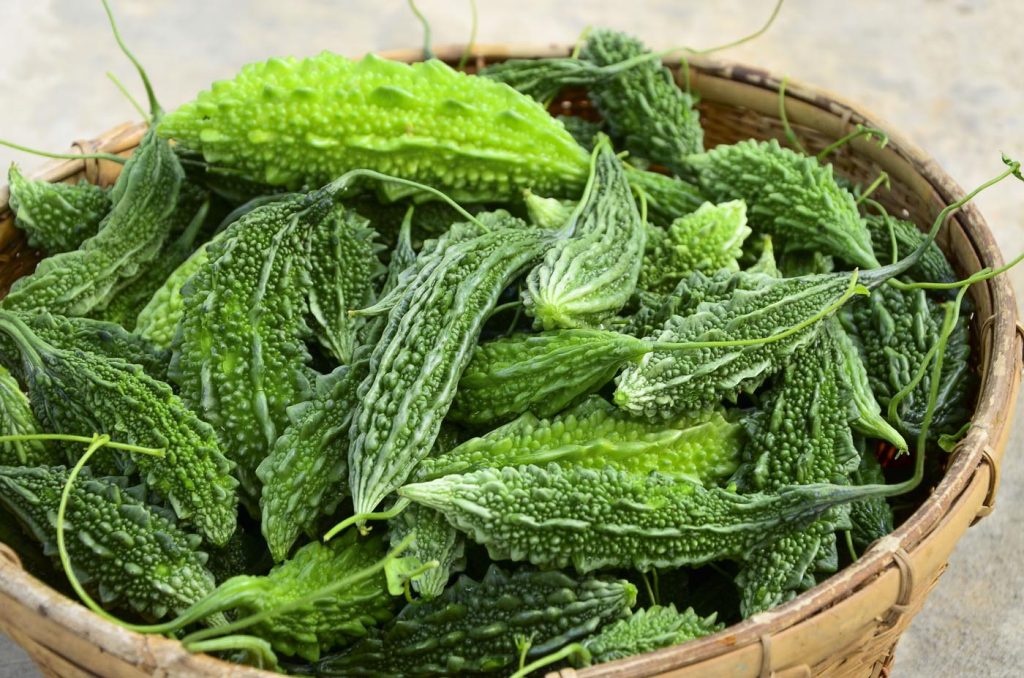

Bitter: coffee, bitter gourd, turmeric and fenugreek.
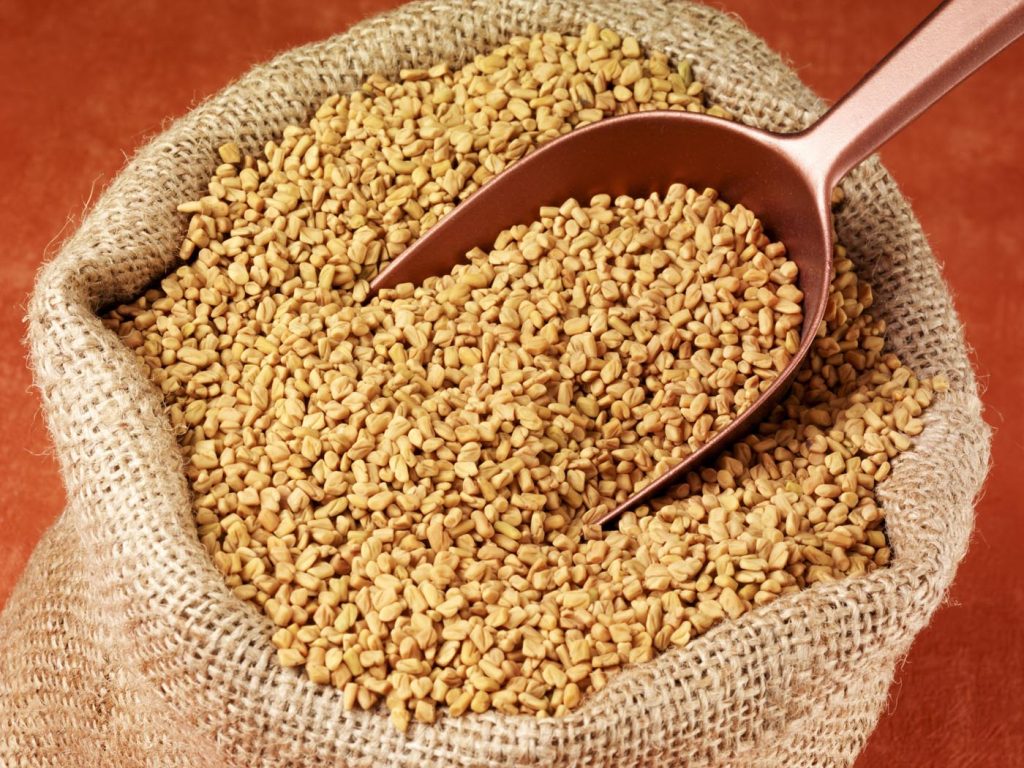

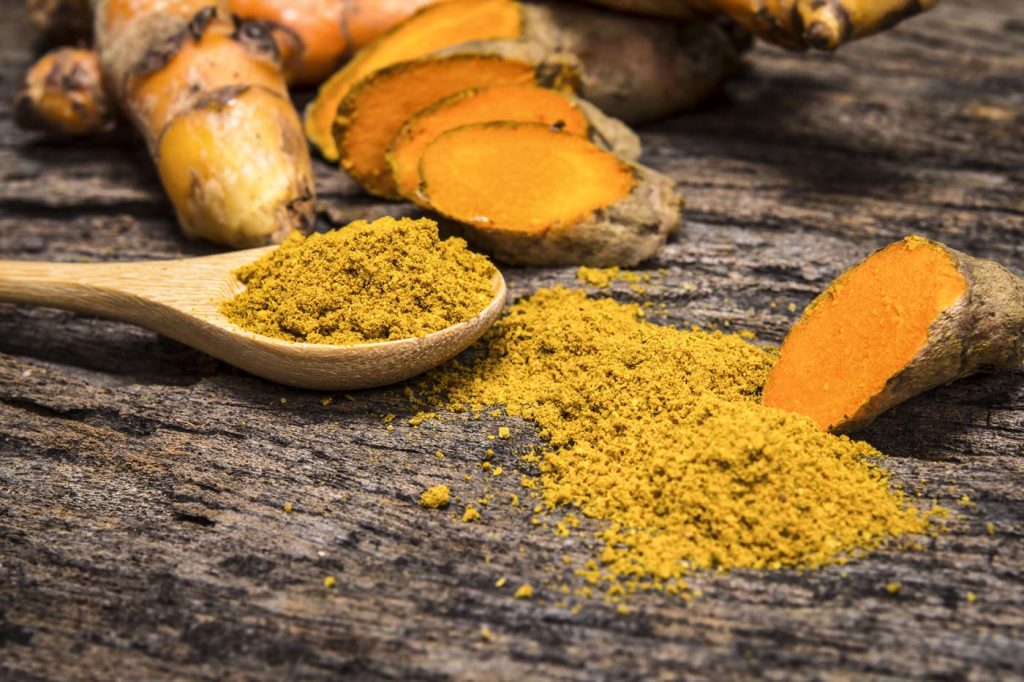

BITTER: Katu, the bitter taste, is produced from a blend of air and ether elements. It is light, cooling and dry by nature. It excites the nervous system. As a blood purifier, it helps the body get rid of toxins and destroys intestinal worms. Bitter food cures diseases caused by excess pitta and kapha. Although it is not very pleasant, it is appetizing in its action. It is a strong detoxifying agent and has antibiotic and antiseptic qualities. It also helps in reducing water retention and skin rashes; it purifies blood and brings lightness in tissues. It is an antidote to poison and vermicide. It cures burning, itching and thirst. It gives firmness to the skin and flesh. It is a digestive stimulant and purifies blood and milk for the lactating mother. In excess, the bitter taste has a drying effect on the body; it induces weariness, fainting and giddiness, and it dries the mouth and creates wind, which results in nervousness and loss of strength.
A few examples of bitter foods are coffee, quinine, grapefruit, papaya (slightly), bitter gourd, neem, asafetida, bay leaf, cinnamon, cumin seeds, fenugreek, garlic, taro, saffron and turmeric.
Indian gastronomy states that the taste of food is not incidental but is an indication of its properties. Different tastes possess different effects. For instance, there is a general belief that pungent foods create more heat, fire or agni, and that bitter foods help reduce fever.
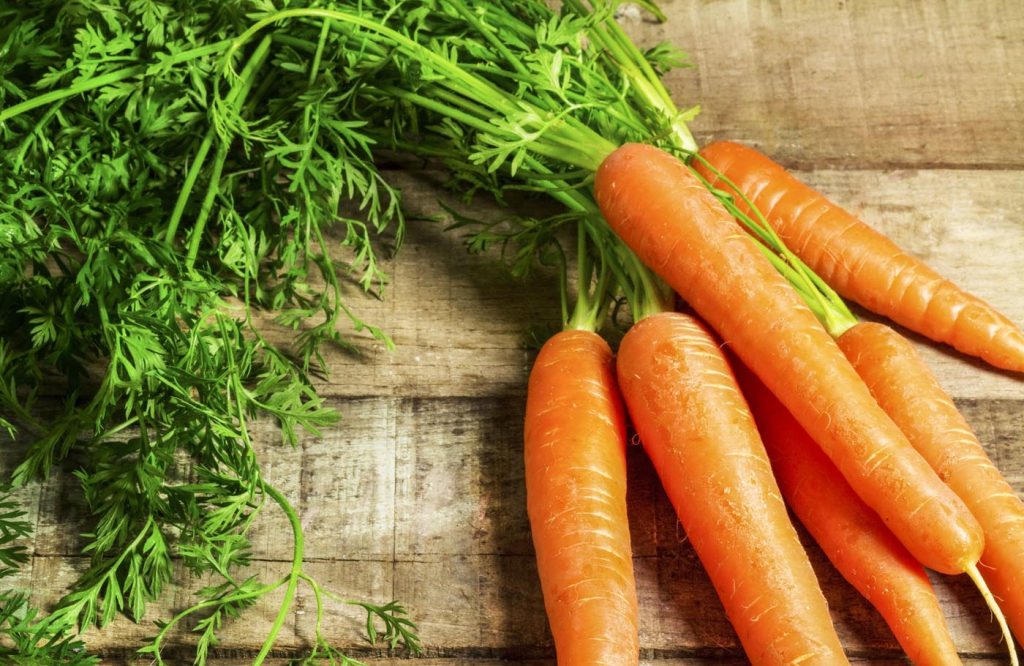

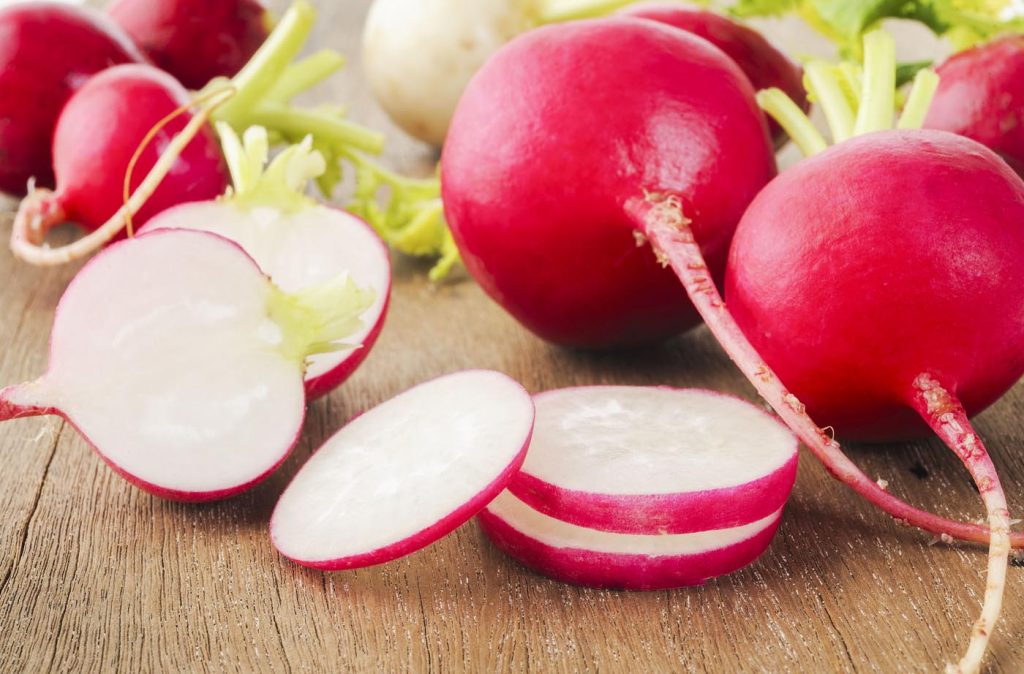

Astringent: carrots, radishes, lettuce and potatoes.


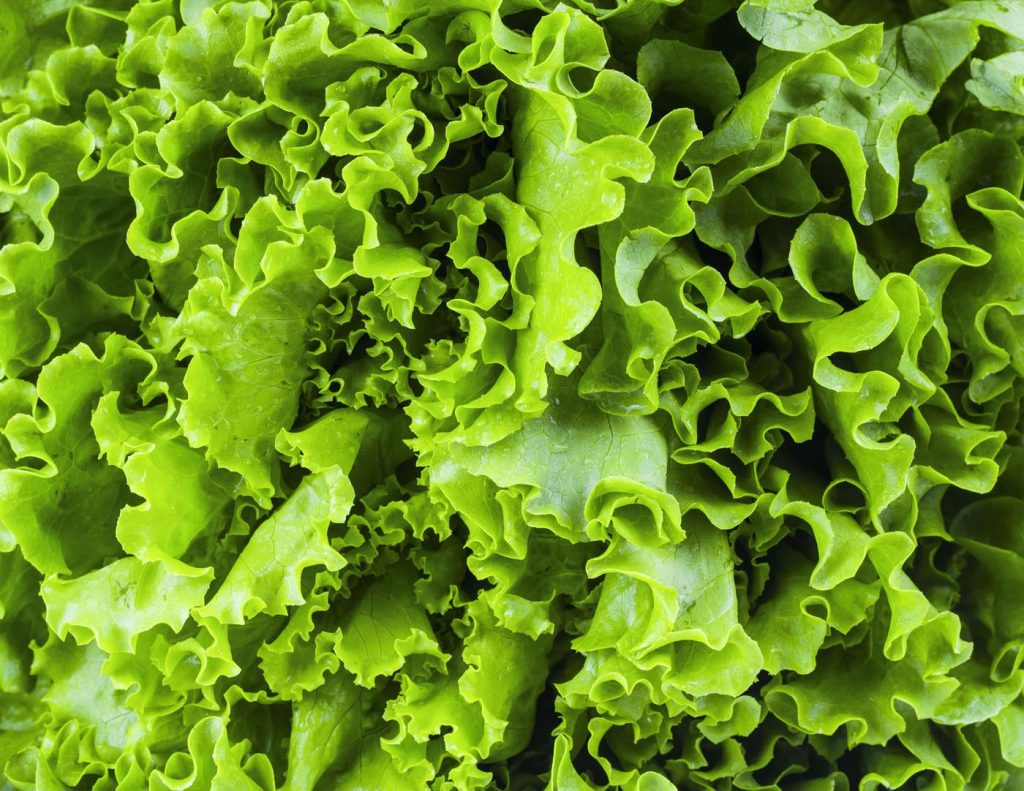

ASTRINGENT: Kashaya, the astringent taste, is heavy, cold and dry in nature. It is produced by a mixture of air and earth elements. It excites the vascular system. It purifies the blood, helps in keeping skin healthy and aids digestion and the assimilation of fats and oils. It is a sedative for the blood, decreases pitta and kapha, and consumes fluids. If consumed in excess, the astringent taste affects the heart, distends the stomach, weakens virility, causes retardation of metabolic functions and raises various fluid disorders. It can cause dryness of mouth, palate and lips. It also can cause constipation and thirst, creating a change in body color. The skin of many vegetables and fruits has astringent qualities. Astringent taste absorbs water, tightens tissues and dries the fats. A few examples of astringent foods are lettuce, radish, alum, unripe banana or plantain, pomegranates, yoghurt, apricots, figs, grapes, papaya, peaches, plums, bitter gourd, carrots, cucumber, potatoes, spinach, coriander leaves, fenugreek, garlic, turmeric, honey and walnuts.
It is imperative to include a balanced ratio of all the six tastes while creating a meal. Consuming all the six tastes in a correct proportion in each meal ensures that all signals are judiciously met. This then prevents food craving and over-eating. If tastes are not balanced, there will be a feeling of dissatisfaction after the meal. This results in an emotional desire for a particular taste. Generally, the sweet taste is most needed; sour, pungent and astringent tastes are needed in moderation; salty and bitter tastes are needed in small amounts only. This also depends on climate and personal biochemistry. The effect of food during digestion is either hot or cold. Foods are also classified as dry or unctuous; which we generally describe as light or heavy.
The Five Senses
THERE IS A COMPLEX UNDERSTANDING BETWEEN FOOD AND THE senses. It is amazing to validate the role of nature in the constitution of the senses, that the basic five elements actually permeate these and inspire them in varied proportion.
SIGHT: The sight of the food prepared is the first sense that comes alive. If the food is not appealing, one would not go further to taste it. Fire or light inspires the vision. Food that does not look good is not cooked with tender feelings and hence doesn’t appeal to us. The appeal of the food being cooked at every step is also determined by its appearance. If the item has turned to a color that is not required, it helps to alter the method of cooking or to change the entire step. Therefore, stress should be laid on the aesthetic aspects of food. The right color coordination in any particular dish gives out a feeling that the dish is healthy and can satiate one’s hunger.


TOUCH: Air vibrates touch. The texture of food determines its characteristics. It tells if the dish prepared is dry, gravy or a sauce. Additional thought should be given to the textures and tactile sensations one feels in the mouth when eating a curd or the satisfaction one feels while biting into a crisp apple, which is attributed, in part, to hearing. While taste variations are clearly prevalent, texture and sensory attributes are emphasized as chewed or charvya, like roots and vegetables; sucked food like curd are chusya; lehya are foods to be licked, like mangos; peya are those that are drunk, like milk; and bhojya, like cooked rice, need no chewing and are swallowed.
SMELL: Earth stimulates the sense of smell. A flavorful, aromatic smell increases the appetite. Since biological evolution times, food has been perceived as safe on the basis of the odor it emits. A foul smell indicated that the food was stale, toxic and rendered unfit for consumption. As the sense of smell developed, with it came the maturity of recognizing ingredients and combining them with their right match. Aroma has always been a significant aspect of food. The feeling of cinnamon might be pungent, but the aroma and then the flavor are sweet. This makes it an excellent ingredient in sweet recipes.
SOUND: It is only in space that one can experience the sense of hearing. The sound of the cracking nut, for instance, enhances the pleasure of eating, as does the sound of biting into anything that is crispy. The crackling of curry leaves and mustard in oil signifies that the oil is at optimum temperature for cooking. It is at this stage, with the help of the hearing sense, that it is determined when the next ingredient is to be added in the recipe. The sound emitted by any ingredient also tells the cook about the edibility of that item. What is supposed to be crisp, if it is not crisp, can be stale.
TASTE: It has a very significant role in our cuisine. Water titillates taste. Without it, no taste can be experienced. Water by itself is neutral, but it is the base medium for each taste. Indian gastronomy states that the taste of an herb is not incidental but is an indication of its properties. Different tastes possess different effects. Usually we do not correlate taste with the therapeutic property of foods. We consider taste only for the pleasure of the palate. In other theories, the taste of an herb is more a means of identification than a means of understanding its effects. There is a general belief that spicy, pungent food creates more heat or that bitter foods help reduce fever, but this is not the basis for classification of herbs by taste.
Madhura relieves thirst and has beneficial effects on the skin, hair and voice. A few examples of sweet-tasting foods are: honey, raw sugar, milk, ghee, wheat, rice, apricots, ripe bananas, coconut, dates, figs, pineapple, ripe mango, papaya, peaches, plums, pomegranates, raisins, taro, red beets, carrots, cucumber, turnips, bay leaf, black cardamom, cinnamon, coriander leaves, fennel, onions, saffron, almonds, cashew nuts, pistachios and walnuts.
INDIA’S SIX SEASONS, RITU
RITUCHARA, THE CONCEPT OF SEASONS, IS DIVIDED INTO TWO kalas or solstices. Adan kala (uttarayana) or northern solstice and visarga kala (dakshinayana) or southern solstice. This division is done according to the position of the sun. Adan means taking away and visarga means giving. In adan kala, the sun and wind are powerful. The sun takes away the strength of the people and the cooling qualities of the earth. It is the depleting period and therefore strength is weakened. In visarga kala, the sun releases the strength to the people. The moon is more powerful, the earth becomes cool due to the clouds, rain and cold wind. Winters, summers and monsoons are the prime seasons for the ripening of fruits and blooming of vegetables, hence we get the best farm produce during these three seasons. The other seasons are transition periods between these three, which help us to accustom ourselves to the nature of Mother Earth. Major adaptation of weather happens during these seasons. An Indian year consists of six ritus or seasons. Each ritu is of two masas or months. Three ritus (one semester) form a kala.


COLD & DEWY, SHISHIRA: It extends from mid-January to mid-March, Magha and Phalguna on the Indian calendar. As the atmosphere is cool, high-energy foods are recommended during this season. Tastes recommended are pungent, sour and sweet. Consuming these foods increases digestive activity. For example, foods such as whole grains, wheat, gram flour, corn, jaggery and tamarind should be included in the meal.


SPRING, VASANTA: Mid-March to mid-May is the spring season, the months called Chitra and Vaisakha. The fire element in our body is very active during this time, hence foods that are cooling in nature should be consumed. Astringent, sour and salty tastes should be included, which are easily digestible—for instance, radish, cabbage, barley, honey, sandalwood, etc.


SUMMER, GRISHMA: The summer months, falling in the period mid-May to mid-July, months known as Jyestha and Ashadha. Sweet, sour and bitter food should be consumed to make up for mineral and water loss. In summers, more fruits and vegetables should be taken, while reducing the quantities of whole grains. Light and liquidy food should be preferred; for example, gourds, mango, curd, boiled rice, honey, dates, cardamom, turmeric, etc.


MONSOON, VARSHA: The season extends from mid-July to mid-September, the months of Sravana and Bhadrapada. As this is the rainy season, foods that are salty, sour and sweet in nature should be preferred. During this season, the digestive activity starts decreasing, hence heavy food should not be consumed. Foods like pulses, grains, buttermilk, etc., should be included in the meal.


AUTUMN, SHARADA: Mid-September to mid-November are the autumn months of Ashvini and Kartika. The onset of winter exposes the body to a cool environment, which can be controlled by consuming sweet, salty and astringent foods. The atmosphere is dry and arid; hence foods like green gram, amala, honey, pomegranate and spinach should be included. One should avoid having curd-based foods.


WINTER, HEMANTA: The winter months, from mid-November to mid-January, are known as Margashirsa and Pausa, according to the Indian calendar. The fire element in the body is quite diminished because of the cold. Therefore, sweet, sour and pungent foods should be preferred. During the winters, one should eat less fruit, because fruit makes one feel cooler. Foods like ginger, pepper, jaggery, carrots, etc., should be consumed.
Not only does this knowledge of seasons and their corresponding tastes give us an insight into availability of food items, but also educates us and exhorts us to do creative and just menu planning. The correct food, if consumed in the respective season, maintains one’s health and is savored, is relished, to the fullest.
With a menu that maximizes seasonal resources, a good chef will use creativity to produce dishes that are appealing, nutritious and healthy.
NINE FEELINGS AND FOODS THAT AFFECT THEM
PHILOSOPHY OF INDIAN GASTRONOMY AND SCIENCE OF ayurveda are continuously affected by the play of five elements and five senses, which further affects our food and vital energies. The Sanskrit word rasa also means the sense of feelings and emotions. Feelings are the important link between body, mind and soul, which further affects our thoughts and emotions. Rasa is also the essence of the feelings that excite both body and mind. We recognize nine feelings: love (shringara), joy (hasya), wonder (adbhuta), calmness (shanta), anger (rudra), courage (virya), sadness (karuna), fear (bhaya) and disgust (vibhasta). In studying the nine feelings/emotions, it is found that each has basic expressions in both ancient and modern times. Each feeling has clear relationships, allowing us to strengthen or weaken one feeling through another. Interestingly, the nine feelings are all interrelated.
Water is the primary element of love, courage, sadness and disgust. Fire element dominates joy, wonder and anger. Calmness and fear are affiliated with air. The three humors, or doshas, are kapha (constituting water and earth), pitta (constituting fire and air) and vata (air and ether). It is through the understanding of these humors, or doshas, that energies can be balanced through our diet. When all three are in balance, each produces certain energies which are important for the functioning of our bodies. When in imbalance, they create the feelings of sadness, disgust, anger and fear.
ALL IMAGES: SHUTTERSTOCK


Together with the five elements and three gunas we get multifold energies. Sattva stands for clarity, understanding and healing. Rajas stands for inspiration, activity and pain. Tamas stands for draft, darkness and attachment. Each guna is related to certain feelings—sattva: calmness; rajas: love, joy, wonder, courage, sadness and anger; tamas: disgust and fear.
Food senses and savors are the primary channels that affect the body, mind and soul. The effect of food on the feelings depends on the action—taste, power of digestion and post digestive action.
SHRINGARA, LOVE: Here love and beauty also means the aesthetic sentiments, sense of looking good, and a feeling of romantic atmosphere enhanced by love and harmony. Ayurveda considers shringara as rajasic. While in love, we experience every emotion in a fine taste. During the spring season, the feelings of love and emotion are at their peak. While experiencing love, the body transforms into a mode in which the small becomes beautiful, where dainty and mushy feelings overtake the larger canvas of life. Food should be moderate, diverse, in small portions and with bright color, like saffron and the pink of rhubarb. With moderate tasting, the fulfillment of a desire lasts longer and is more effective. Tasting rather than eating is the essence of romance.
HASYA, JOY: Joy is a divine feeling, and is dominated by the fire element. It is rajasic in nature. The feeling of joy is healthy and rejuvenating. It reduces anger, depression and tension and produces fluids which aid in digestion. The food that brings out good memories of the past is generally consumed when one is joyful and happy. It is also true that joy, when combined with love, takes every human to ecstasy, the feeling of ultimate elixir. You must feed yourself and others with love and joy.


ADBHUTA, WONDER: It is rajasic in nature and dominated by the bile humor. These are the foods that make one wonder about their origin and production. It is influenced by various other senses. A new taste, a different aroma, an unlikely feel, a distinctive sight, a novel sound or a crunch makes one wonder about the food that is being consumed. A new combination of varied ingredients that were probably not experienced earlier makes one wonder about the permutation and combination. Tasting such food provokes the feeling of wonder in oneself, and in that moment the complete knowledge of the ingredients is experienced.
SHANTI, CALMNESS: The element for the feeling of calmness is air. It is sattvic in nature. Sometimes calmness brings a lot of joy, and this combination of feelings is very pious. Through food, too, one can attain calmness. Calming foods include honey, tulsi leaves, curd and soaked almonds. For food’s best effect on one’s body, mind and soul, it should be consumed in a calm state of mind. This is so because, when we are calm, a particular chemical is released by the brain, and this chemical reaction between the food and mind further soothes our nerves.
RUDRA, ANGER: This is one of the emotions wherein ego becomes extremely dominant. Anger is rajasic and is of the fire element. The dominance of the fire element due to anger makes the body high with acidity. This causes sickness, such as cardiovascular diseases, and impairs eyesight. Drinking several glasses of water immediately cools down anger. Anger has a strong ability of self-destruction. Traditionally, drinking water kept in a silver glass overnight is known to best cool down anger. Hunger creates irritability, but a taste of sweet reduces the biles produced by the liver. Green cardamom will turn the bio-chemistry to alkaline, reducing acidity and thus anger. Yogurt and whole lime juice, extracted with skin and seeds, also have a cooling effect. Foods recommended for reducing anger are alkaline in nature.
SHUTTERSTOCK


VIRYA, COURAGE: This rasa relates to inner strength with perfect control of body and mind. The emotion is dominated by water and is rajasic in nature. Thus, it is kapha (mucous) people who are most likely to develop courage. This is an element found in warriors, who need the bodily energy to retain their power of determination. Foods in this category are spices and fats, and for nonvegetarians, meat. A very high protein diet is recommended to maintain the feeling of courage. A sound mind and balanced body are also prerequisites to having courage.
KARUNA, SADNESS: This emotion is rajasic in nature and dominated by the water element. When sad, one should eat food that brings comfort to mind and body. Food should be consumed that would release the anxiety from the body and produce happy neurotransmitters such as endorphins and other opiates, which help reduce stress and lead to feelings of euphoria. Food with high sugar content should be consumed. That gives energy and peps up the mood; foods like potatoes, rice, butter, lemon, candy sugar, jaggery and honey. While in this state of mind, one should explore within oneself the real cause of karuna. Hence you shall be able to fight and be a winner.
BHAYA, FEAR: Fear is the natural protector from many harms. Fear is rajasic and dominated by the element air. Its speeds the heartbeat and the breathing rate. A metallic taste can be sensed in the mouth. This is taste of akasha, or ether. People falling under vata tend to become fearful more easily as compared to kapha or pitta people. Eating khamira, made from pure pearls, helps in relieving fear. As sugar or glucose is the main food for our brains, which accelerates its proper functioning, it is important to include sugar in one’s daily diet. Low sugar causes nervousness and anxiety. Courage, joy, love and calmness remove fear. Pure ignorance leads to no fear at all.
VIBHASTA, DISGUST: Prolonged sadness, anger, fear and disgust all are related to the tamasic nature. This emotion comes under the air element. Constipation is a major cause of this feeling. The continuous spreading of toxins produced by rotting food in the intestines makes it impossible to develop finer feelings. Spices that are pungent in taste and nature help in relieving such feelings. The body chemistry must become more alkaline to reduce the feeling of fear. To counteract fear, one can increase the intake of fresh fruits and juices. Astringent and bitter-tasting foods will help the liver in detoxification of the blood, as well as the production of digestive juices and protein synthesis.
Characteristics of a Chef
1. A chef should be vigilant, well-versed in science, clean and devoted (kshema kutahala).
2. A chef is calm, controlled, generous, fit to be honored and has a pure smile. He is devoted and with pure thoughts.
3. He is of measured words, kind, charitable and has knowledge of metals, seasons and the conditions of people according to their age.
4. Before cooking, he washes his feet and hands and performs the purifying rites.
5. Knowing the program of his diners, he arranges to offer the appropriate dishes. Likewise, he is aware of the unique diets of his diners and serves their special dishes in proper order.
Written by Nala, a famous legendary king who authored India’s
first known cookbook in the fifth century ce, Nal’s Pakshastra
SHUTTERSTOCK


WHY IS AYURVEDA NOT WHOLLY VEGETARIAN?
IN HIS AYURVEDIC COOKBOOK, Indian gastronomy (from which this Insight is drawn), Chef Gill provides vegetarian recipes as well as meat dishes. Those familiar with ayurveda as part of spiritual practice might be puzzled by this, perhaps thinking that meat should not be included. HINDUISM TODAY, after all, promotes vegetarianism avidly. To shed light on this, Pandit Vamadeva provides the following explanation.
Ayurveda’s rejuvenation therapy, rasayana, as discussed in the first chapter of the Chikitsa Sthana of Charaka Samhita, is purely herbal, vegetarian and dairy based. It is combined with achara rasayana I.4., or rejuvenating lifestyle, which consists of all the yamas and niyamas (restraints and observances) of yoga, including ahimsa, (non-hurtfulness), meaning vegetarianism. This rishi-style life is recommended for optimal health for all.
However, ayurveda is for all levels of people, including those not yet ready for the spiritual life, who are still dominated by rajas and tamas. As such, ayurveda explains the qualities of meat and fish for those who are likely to consume them anyway, so that their intake is least harmful. However, for spiritual practices, ayurveda recommends vegetarianism.
SHUTTERSTOCK
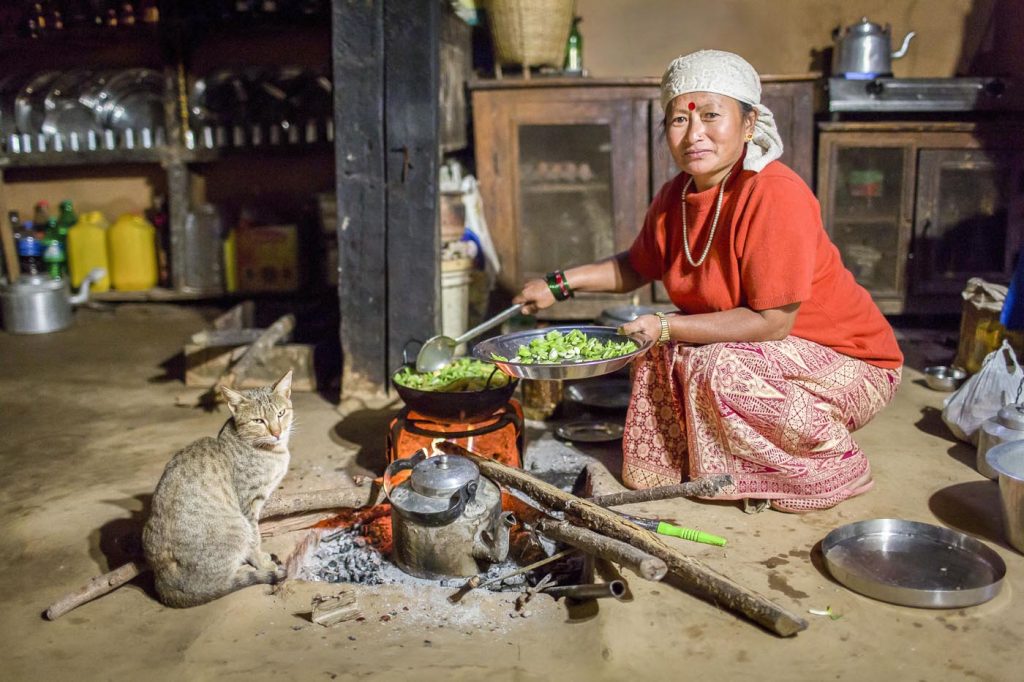

The same is true of Hindu dharma overall. Hinduism recommends vegetarianism, and it is required for certain sadhanas and by certain sampradayas. But it does not exclude anyone for eating meat, or say that they cannot be a Hindu if they eat meat!
A SAMPLE RECIPE FROM SECRETS OF INDIAN GASTRONOMY
Chana Madra
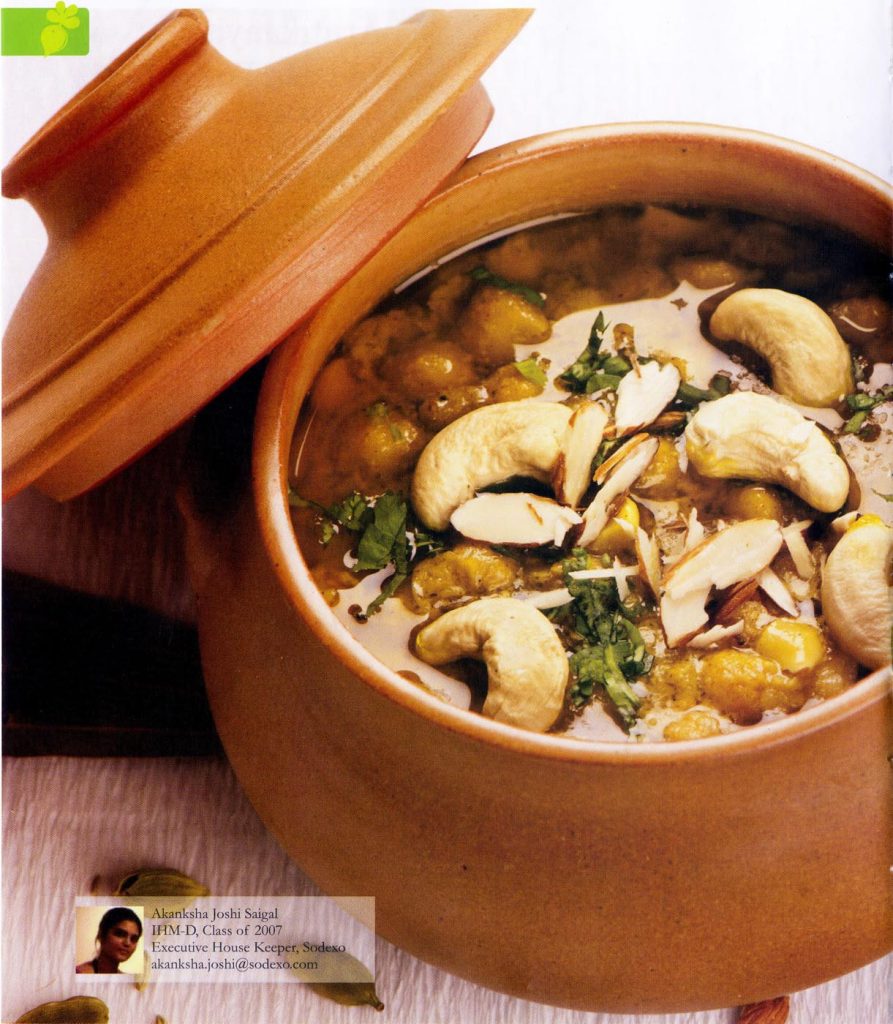

A dish from Himachal Pradesh in which chickpeas are cooked in curd with aromatic spices. Recipe by Anksha Joshi Saigal.
To serve 4 to 5
1 cup chickpeas
2 tbsp desi ghee
2 bay leaves
2 black cardamoms
3 pods green cardamom
2 cinnamon sticks, 1” long
1 tsp fennel seeds
salt to taste
2 tsp turmeric powder
3 cups curd, whisked
1 tsp sugar
8-10 cashews
8-10 almonds
2 tbsp raisins
2 mint leaves, chopped
• Pick, wash and soak the chickpeas overnight in 6 cups of water.
• Place on high heat, add salt and bring to boil. Reduce heat to medium low and let it cook until tender and soft.
• Take ghee in a wok and place on medium heat, add in the bay leaf, black and green cardamom, cinnamon and fennel, stir and add a little salt while sauteing.
• As soon as the spices start spluttering, add turmeric powder stir for a few seconds then quickly add in the whisked curd.
• Stir and cook masala till ghee starts surfacing; continuously stir. Now add the boiled chickpeas to the boiling liquid, along with the sugar, cashews, almonds, grated coconut and raisins. Check seasoning and let it cook for 10-12 minutes.
• Serve garnished with chopped mint.
A number of Hindu communities eat meat, particularly those in the Himalayas and the East of India, and also somewhat in Kashmir and Kerala. Those living by the ocean, particularly in Kerala, Tamil Nadu and Bengal, often eat fish. Historically, Hindu kshatriyas hunted and ate meat (though they practiced vegetarianism for sacred events).


